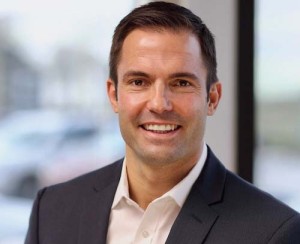Is the automotive industry on the precipice of being trampled by the forward march of technology?
One of the most recognizable names in cameras is Kodak, and one of the most recognizable taglines in consumer product history is “a Kodak moment.” Coined by company founder George Eastman in 1892, the phrase grew into a broadly used metaphor for the “perfect” moment, a soon-to-be cherished memory worthy of the consumer’s use of camera film and subsequent development costs (some of you may even remember the tiny Kodak developing huts found in parking lots).
All this to say…. the automotive industry is currently having a Kodak moment.
There is going to be a lot of excitement and drama in the automotive industry over the next 10 - 15 years. Industry leaders are no longer questioning the reality of the shift to electric vehicles (EV), as investments from the original equipment manufacturers (OEMs) are clearly showing their intention. Starting in 2023, it is estimated that 35% of all new vehicle launches in North America will be majority battery electric vehicles and some hybrid electric vehicles. From there, the number of vehicle platforms with electrification will only increase.
North America Slower to Electrify
North America will be slower to electrify compared to Europe and China, but even considering a slower transformation, experts are predicting that approximately 35% of cars manufactured in North America in 2030 will be battery and hybrid vehicles. This substantial change is coming on the heels of the COVID pandemic, semiconductor shortage and other supply chain constraints, causing the automotive industry to lose approximately 25% of its total sales during 2020, 2021, 2022, and severely impacting the profitability of an industry plagued by high capital costs.
Suppliers will continue to struggle to survive reduced sales volumes and at the same time shift their product portfolio to Battery Electric Vehicles (BEV) and bear the cost to right size their company. BEVs use approximately 30% fewer components, so if your company has not already redefined its product offering, the ship may have sailed unless you have the cash to buy a company that has a product currently in production or soon entering production. A supplier consolidation is emerging and due to the high investments required by OEMs for EV and Autonomous, some Tier 1 companies will experience massive growth and emerge as Tier 0.5.
After the enormous re-tooling, capital expenditure and re-training of the workforce needed in order to launch electric vehicles, we will see the emergence of more automated vehicles and an increase in subscription/shared mobility. Fully autonomous vehicles are still not going to become mainstream until the 2030s due to the current high retail cost of $150-$200,000, but it is coming, and it will impact the industry. Cars are sitting idle 95% of the time and this will drive an increase in shared/subscription mobility. The market will force the automotive industry to become more efficient, impacting global passenger car production. Some suppliers are pivoting and focusing resources on smaller vehicles, i.e., drones, small package delivery bots, etc. as a source of future revenue.
Our analysis is that geopolitical tension with China, a significant source of the North American automotive supply, and the rise in disruptive events will force additional costs for OEMs and suppliers, leading them to implement near-shore production, increase inventory, and/or increase monitoring of production and shipping through advanced software.
Seraph Consulting, which works closely with the auto industry to support product launches, recently conducted an informal survey of OEMs and suppliers, to better understand the complexities of launching EV production. We discussed the risks to the industry of shifting to EV and Autonomous; the summarized responses indicate the scope of this challenge:
Capacity Issues
Is there enough capacity? No, however, OEMs and suppliers are introducing additional capacity.
Are there trained employees available? No, not only do we have a huge labor shortage, the biggest concern is the lack of Program Logic Control (PLC) and maintenance personnel.
Are there new suppliers and technology? Yes, and many of the non-traditional suppliers do not have the same understanding of the quality and warranty standards required in the automotive industry as our traditional suppliers have had.
Are constant engineering changes a challenge? Yes, as the industry is evolving faster than ever, requiring better design, engineering, and manufacturing. More and more technology in the vehicle is similar to that of the cell phone industry in that updates are required at an increased rate compared to the past.
The automotive industry’s transformation may not be as quick as the camera industry’s but the impact will be more dramatic, given that the global automotive industry is worth $8,931 billion in 2030 according to Statista, and represents 3% of U.S. GDP. OEMs and Tier 1s, take note: there should always be a healthy balance between finance, sales, operations, and engineering; however, if you are not constantly innovating, the probability to succeed in this constantly evolving industry decreases exponentially.

With close to two decades of extensive business development, operations and program management experience in the automotive industry, Thomas Kowal works closely with OEMs and suppliers as the VP Business Development at Seraph, a supply chain/manufacturing turnaround consultancy.

